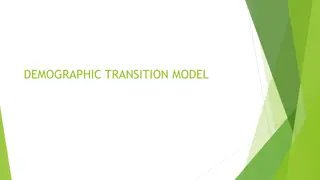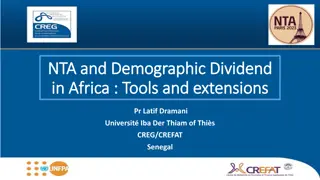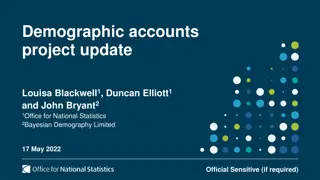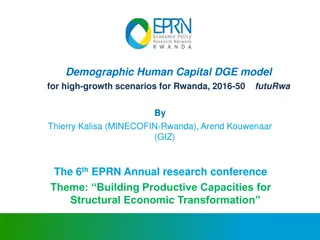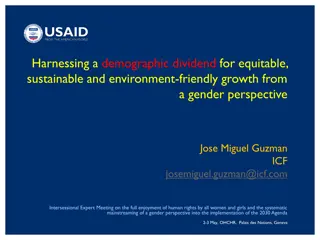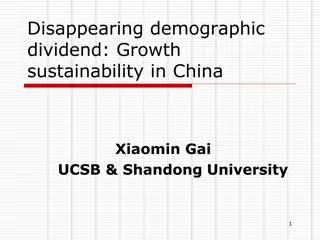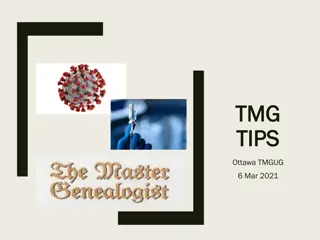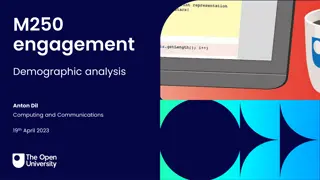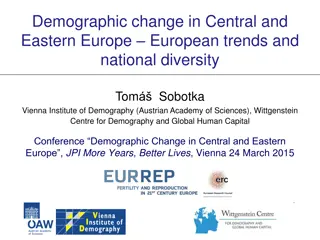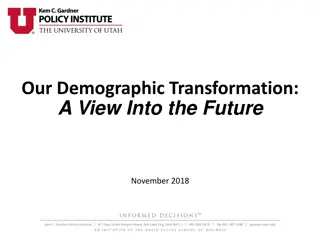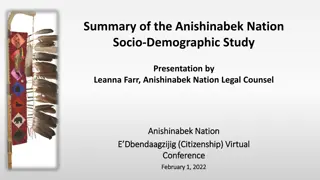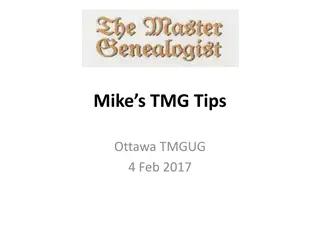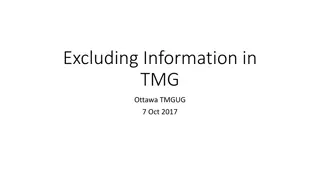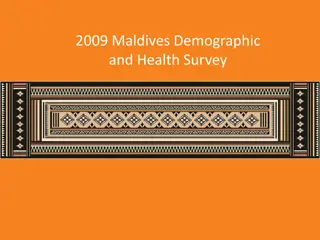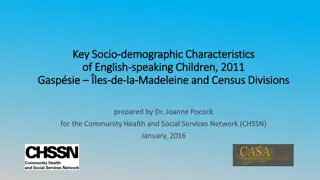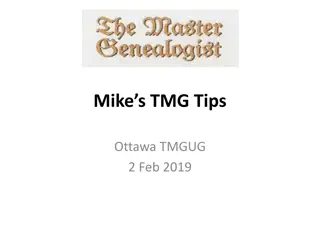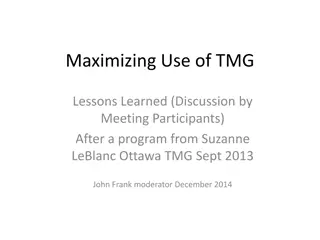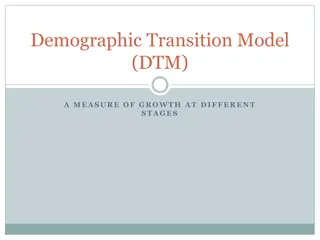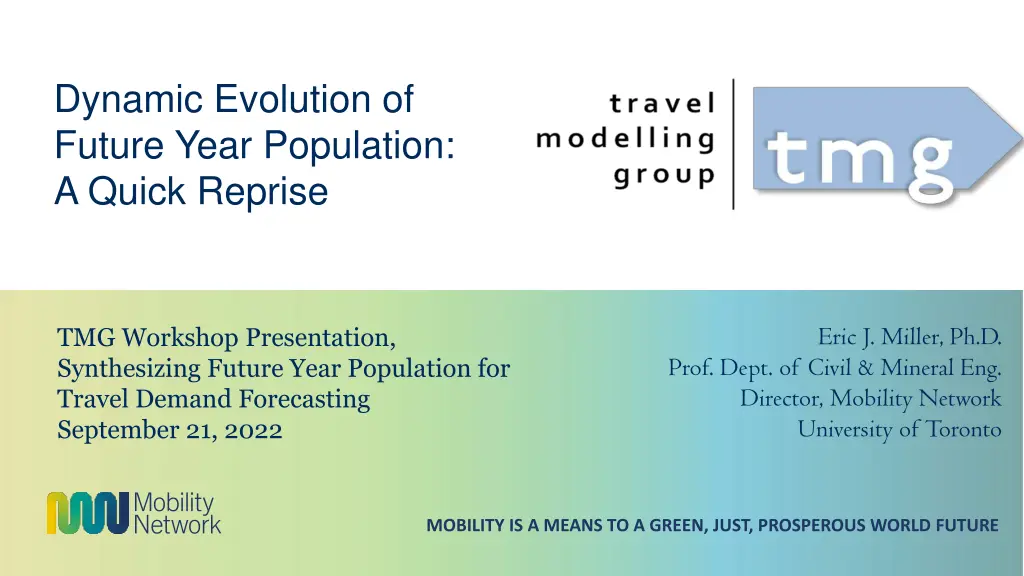
Understanding Future Population Dynamics for Travel Demand Forecasting
Explore the dynamic evolution of future year population trends and their impact on travel demand forecasting through exogenous population forecasts, employment synthesis, static and dynamic forecasting methods. Discover how demographic attributes and socio-economic factors influence future scenarios.
Download Presentation

Please find below an Image/Link to download the presentation.
The content on the website is provided AS IS for your information and personal use only. It may not be sold, licensed, or shared on other websites without obtaining consent from the author. If you encounter any issues during the download, it is possible that the publisher has removed the file from their server.
You are allowed to download the files provided on this website for personal or commercial use, subject to the condition that they are used lawfully. All files are the property of their respective owners.
The content on the website is provided AS IS for your information and personal use only. It may not be sold, licensed, or shared on other websites without obtaining consent from the author.
E N D
Presentation Transcript
Dynamic Evolution of Future Year Population: A Quick Reprise Eric J. Miller, Ph.D. TMG Workshop Presentation, Synthesizing Future Year Population for Travel Demand Forecasting September 21, 2022 Prof. Dept. of Civil & Mineral Eng. Director, Mobility Network University of Toronto MOBILITY IS A MEANS TO A GREEN, JUST, PROSPEROUS WORLD FUTURE
Problem Definition (1) Exogenous Population & Employment Forecasts by Zone Agent Synthesis At a very high level of abstraction, both GGHM & GTAModel can be represented as consisting of 3 meta components . Daily Activity/Travel Demand Road & Transit Network Assignments Model System Outputs: Travel times, costs, volumes, congestion levels, etc. by road link & transit line segment O-D travel times, volumes, etc. by mode & purpose Impacts: pollution, GHG emissions, etc. .
Exogenous Population & Employment Forecasts by Zone Problem Definition (2) Person & Household Synthesis Job & Labour Market Synthesis Job Synthesis: Synthesize jobs by category Population Synthesis: Demographic attributes Socio-economic attributes Labour force participation Create households Assign persons to households Agent synthesis can be decomposed as illustrated. PoRPoW Linkages PoRPoS Linkages Mobility Tool Synthesis* Driver s Licenses * GTAModel V4.1 does not synthesize transit pass ownership. ** Car-sharing membership is not modelled in GTAModel V4.1. Household Auto Ownership And/or car-sharing membership**
Static Forecasting Forecast Year Scenario Assumptions X Base Year, t0 Observed Pop/Emp Forecast Year, tf Synthesized Pop/Emp Forecast year synthesized population & employment directly generated based on assumptions concerning forecast year rates, parameters, etc. No evolution of the system over time. No path dependency. No influence initial, base conditions. Strong static, equilibrium assumptions. Although equilibrium conditions are not usually explicitly enforced.
Dynamic Forecasting Year t1 Assumptions Year t2 Assumptions Base Year, t0 Observed Pop/Emp Year t1 Year t2 . Synthesized Pop/Emp Synthesized Pop/Emp Population & employment evolves in incremental (annual) steps. Path dependent: ??? ? + ? = ??? ? + ??? ? Consistent with / dependent on the initial state. Can co-evolve ELF & EMP. Travel demand can be consistently generated at intermediate years (if desired), not just the forecast end year. Do not need to assume equilibrium at any point in time. Can generate multiple futures, if desired. Important step towards integrated urban models.
Demographic Updating A demographic updating procedure has been developed for the GTHA that updates household, family & person attributes each year in a simulation run. Assumed transition rates by year, categorized by agent attributes are used.
Historical Test Runs, 1986-2006 1986 Census 1986 Initial State Twenty-year simulation runs, 1986-2006 1991 Census 1996 Census 2001 Census 2006 Census Compare run predictions with observed data Other time-series historical datasets (CMHC, TREB, TTS, )
2006 Age Distribution 70-74 60-64 50-54 40-44 30-34 20-24 10-14 0-4 12% 10% 8% 6% 4% 2% 0% 2% Historical Males Historical Females 4% 6% 8% 10% 12% ILUTE Males ILUTE Females
2006 Females 10.0% 4.0% Married (M) and Single (S) Divorced (D) and Widowed 3.0% ILUTE vs. historical household type distributions 5.0% 2.0% 1.0% (W) Distribution Distribution Single Fam Indivs 0.0% 0.0% Single Indiv Multi Indiv Single Fam Multi Fam 20.8% 2.8% 74.0% 2.2% 0.1% 1986 Historical M ILUTE S Historical W ILUTE M Historical D ILUTE W Historical S ILUTE D StatsCan 21.4% 3.7% 71.6% 3.1% 0.2% 1991 22.0% 3.0% 72.5% 2.2% 0.2% 1996 22.2% 2.9% 72.6% 2.1% 0.2% 2001 2006 Males 21.1% 3.3% 74.1% 1.0% 0.5% 1986 10.0% 1.0% Divorced (D) and Widowed Married (M) and Single (S) ILUTE 23.3% 2.8% 71.9% 1.8% 0.4% 1991 5.0% 0.5% (W) Distribution 25.3% 2.4% 70.4% 1.7% 0.3% 1996 Distribution 0.0% 0.0% 27.3% 2.2% 68.7% 1.5% 0.3% 2001 Historical M ILUTE S Historical W ILUTE M Historical D ILUTE W Historical S ILUTE D
Possible Extensions Improve base year popsyn method. Accommodate regional control totals. Incorporate occupation & income. Extend tests to 2006-2021 time period. Employment updating? 10
Thank you. Let s discuss! 2016 GTHA Employment Levels (2016 TTS)
A few references Chingcuanco, F. and E.J. Miller, The ILUTE Demographic Microsimulation Model for the Greater Toronto-Hamilton Area: Current Operational Status and Historical Validation , GeoComputational Analysis and Modeling of Regional Systems , J.C. Thill and S. Dragicevic (eds), Springer, 2018, pp. 139-162. Beykaei, S.A. and E.J. Miller, Testing Uncertainty in ILUTE - An Integrated Land Use-Transportation Microsimulation Model of Demographic Updating , Journal of Civil and Environmental Engineering, 7:1, 2017, 1-9. DOI: 10.4172/2165-784X.1000264. Chingcuanco, F. and E.J. Miller, A Demographic Microsimulation Model for the Integrated Land Use, Transportation, Environment (ILUTE) Model System , pre-print CD 92nd Annual Meeting of the Transportation Research Board, Washington, D.C., January, 2013. Farooq, B., E.J. Miller and F. Chingcuanco, A Dynamic Microsimulation Model for Demographic Updating , presented at the 56th North American Regional Science Association International Conference, San Francisco, November 18-21, 2009. Miller, E.J., F. Chingcuanco, B. Farooq, K.M.N. Habib and M.A. Habib, Development of an Operational Integrated Urban Model System, Volume IV: Demographic & Labour Market, Toronto: Urban Transportation Research & Advancement Centre, University of Toronto, December, 2008, 42 pages. Miller, E.J., Modeling Regional Economics, Land Use, Demographics and Travel: Putting the Pieces Together , invited presentation, 5th Oregon Symposium on Integrated Land Use - Transportation Models, Portland, OR, June 19-20, 2008. 12

